Understanding Joints – How Best To Combine Them
I think sometimes, often, we fail to see the unionising of different joints, failing to devise our own types but then how best to combine them in projects. My research spanning six decades has taught me many things and especially with joinery. Principally, I always wanted to see inside furniture to understand, yes, how something was made, but then how something was made differently too. Through those decades I learned about the me devising joinery for the common benefit of longevity. Without the forethought of their meandering forays into difference and in some cases shunning the status quo of their craft, I would never have discovered how the strayed from the norm would ultimately better. the joint or even make the impossible possible For instance, most mitres will ultimately fail and show a gap somewhere after a few years because of unequal shrinkage. When I saw a table with a mitre in an impossible place I wondered how he and achieved the impossible. That perfect mitre, still good 150 out but still as airtight as the day it was made. – how was that even possible? The pure defiance of nature, the insight of forethought and planning, the mastery of all things craft. So, so many elements of work by a hundred thousand absolute unknown artisans living in cottages, and terraces and working in modest workshops with no power but candles, flame lanterns and a dirt floor surrendering a few square feet to work in. There would be no complaining when the lights grew dim and the wind howled through chinks and cracks; just irrebuttable facts of life.
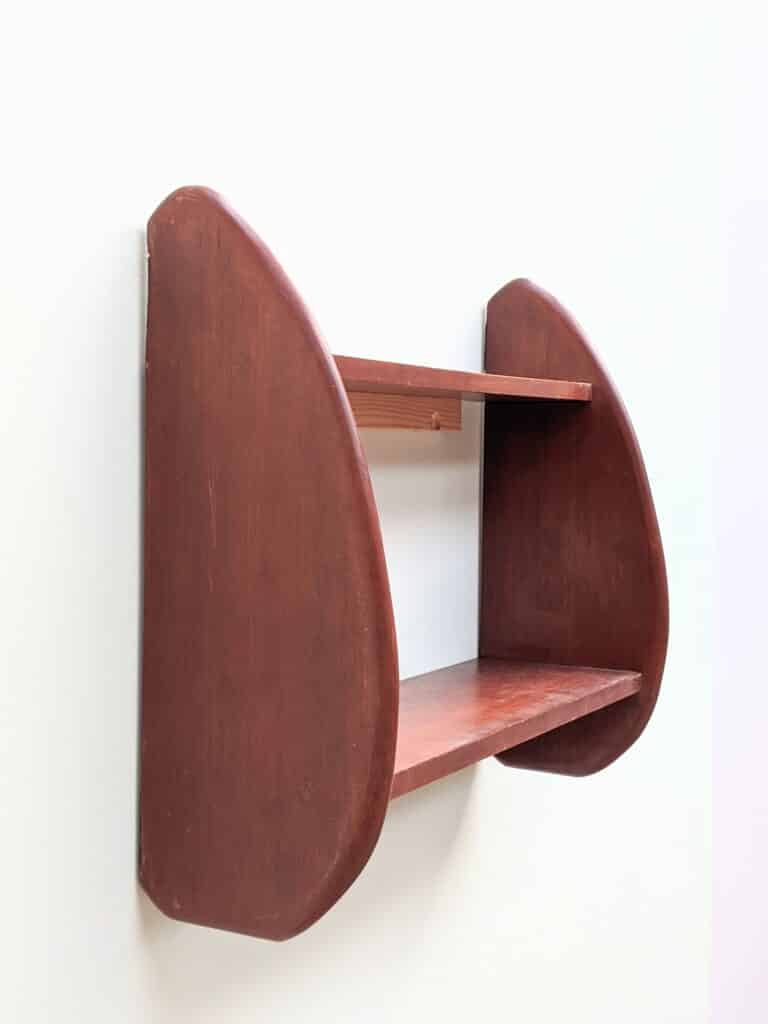
My recent inclusion of an otherwise unseen version of a dado came to me as a need in one of my latest projects. Whereas housing dadoes have had their place for decades and centuries, and I have used them in my work for six decades since my first ever versions in my first real woodworking project back in 1963, I have never really liked the idea that in and of themselves they have very minimal mechanical properties. The alternative might be the sliding dovetail which is essentially a dado with dovetailed sides or indeed one side angled only. My idea had been long thought through by me and the day came when I decided to make what I knew would work. I first made one to see what obstacles might make it prohibitive and was surprised by how easy and uncomplicated it was. It looked complicated but once I’d made it it became mine to own.


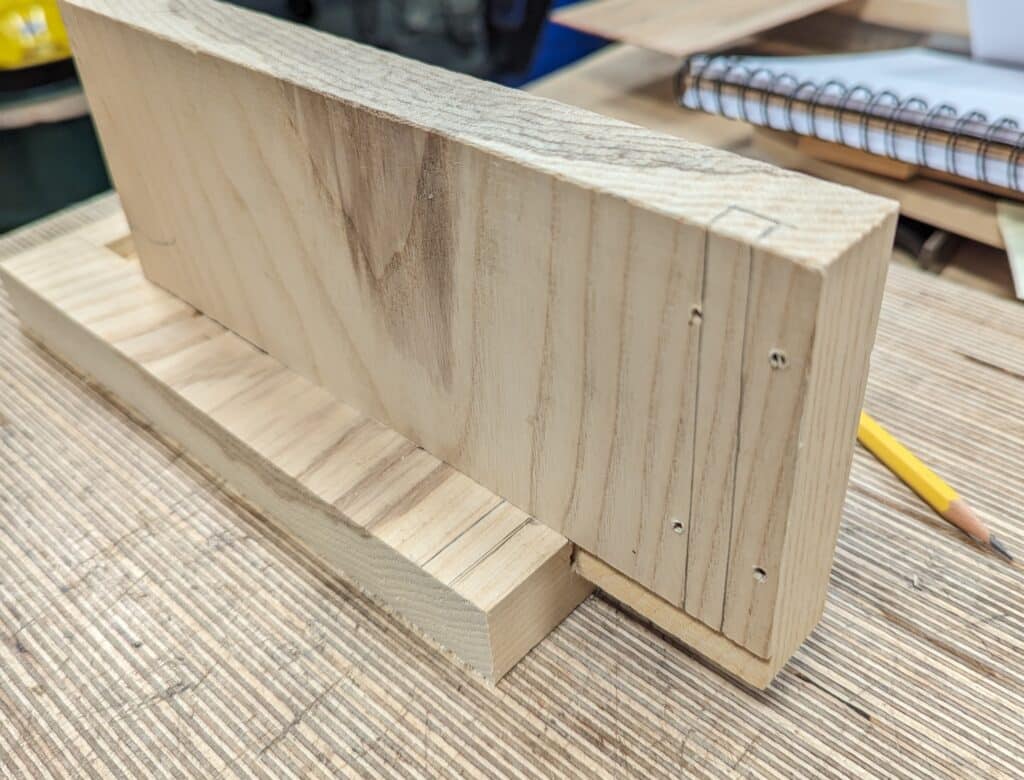


It is bemusing how culture shifts to try to favour no-joint woodworking to eliminate the need of true joinery and then justifies it by presenting the vintage versions as out of date and unnecessary. By espousing the virtues of replacements with descriptions like fast and easy, simple and no-fuss betterment they project something that really isn’t most often true at all. using other methods usually means jumping through many hoops and the end result rarely matches the ambition. In the end, all it really is is no more than a mass-production intervention replacing and displacing any need for real skill. No matter which way you slice it, third-component biscuits, dowels and dominoes rely on makers buying into a conveyor belt patronage with a methodology ensuring that you keep returning to the store for your packet of biscuits, plugs, dowels and dominoes to speed up the work. I liken this to other areas of life. Take the word ‘work’ for instance. I have spoken of this on my different platforms. To many, and I understand the reasons, work is often seen as something of a dirty word. It’s something you just have to do rather than being something anyone gravitates to do. This does, of course, revolve around the work you do, the pay you get or don’t get, the freedoms it might give and much more and then too the people you work with, the people you work for and so on. There can be a tendency to miss the true value and meaning work has for us. On a personal level, I have never known a day in sixty years where I didn’t have work. When one job finished, the next day started another. But more than that, even when I made less than minimum wage and needed to work twice as long as my peers to make a living ( doubt that I have ever in my life worked less than 50 hours a week and mostly still work around 60 over my intended six-day week; my choice always) I have always, always wanted to go to work for the pure joy of making.
In a recent set of three videos we made I created three joints to show that we need only eight hand tools to create all the joints we use in woodworking

Back to joinery and joinery with hand tools. What I love about hand tool joinery is the versatility it gives me in introducing minor changes in the moment to make the joint tight in the slight twist of a wrist guiding the saw and then too the skewed slice of a chisel. I have many fixes for miscuts that never compromise the integrity or even the appearance of my joints. The importance of combining one joint type with another, dadoes with a mortise and tenon and dovetails, for instance, in close proximity one to the other, create a dimension you just cannot accomplish using any other way of woodworking without some very serious jigging and even two hours extra work and some very sophisticated and expensive equipment. Of course, the manufacturers of guides give the impression that the guides they sell simplify your work and effort but it’s easy to lie on the pages of a magazine and a website. My deciding to put a dovetail in a position almost anywhere is instant to think up and just about as instant to expedite. The example below is worth looking at. If I decide to do this for the top rail of a cabinet at the last minute then ten minutes or so later I will have completed the whole joint. Not so with a power router or any other machine.
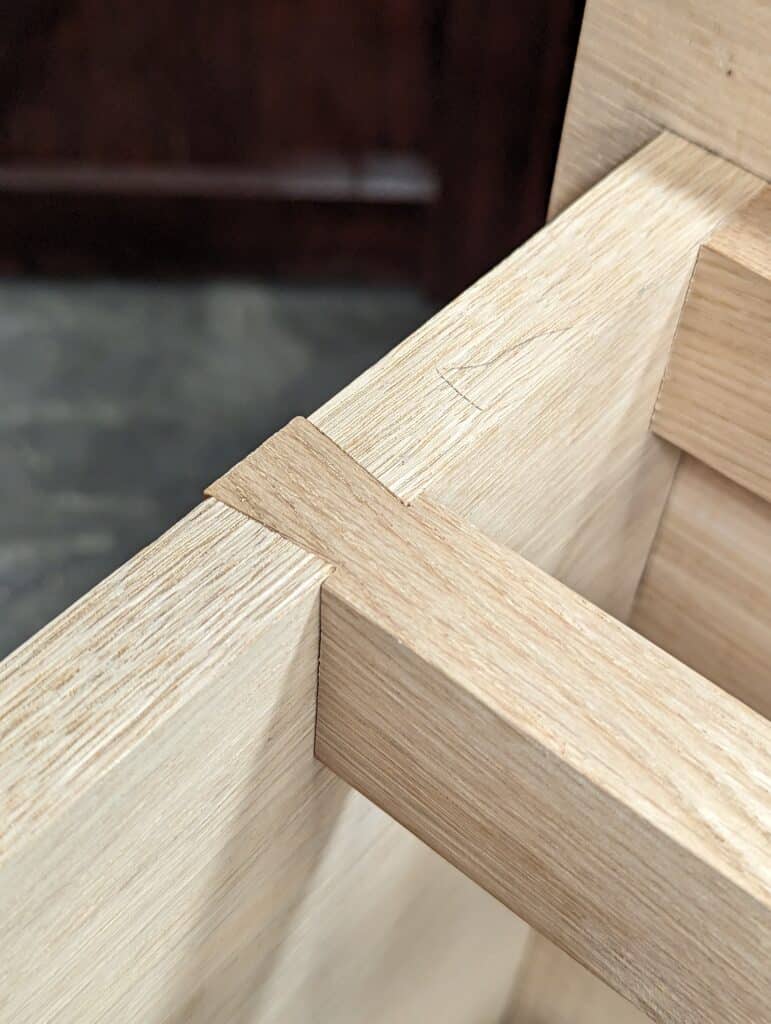
This becomes one of the best of the hidden dynamics we skilled woodworkers have and it becomes irreplaceable for adding strength and support to our working. The instance of handwork makes the impossible possible and that with very little real effort even after all other joints are made and the project is glued up and permanently together. By the skill and dexterity of handwork, we can still add the extra rail if needed or we feel it’s better. You cannot just lug a whole cabinet onto a tablesaw or chopsaw to fit an added component with a tenon or a dovetail somewhere. The videos I make are my way of enabling woodworkers throughout the world to rethink even the three simple joints of housing dado, dovetail and mortise and tenon.
I often add a through tenon to the ends of a shelf, have them pass fully through the sides and then sometimes wedge them dovetail-fashion after slightly widening the xits side of the mortise hole. This creates a highly functional mechanical opposition for guaranteed pull resistance to the bookcases. By this, I have the hybrid jointing I speak of that no other true joint can replace in this particular application. Combined with shoulders, such applications to joints increase to combine rigidity with resistance values exponentially and in our hand tool work it’s more a question of added integrity most will most likely never even notice. It’s really a small thing to make additions like this but so gratifying and well worth the extra effort.

See this drawer back, as an instance of joinery combination for instance. It can be wedged or not but the wedging into a widened mortise exit making it wider along the long axis of the drawer side gives added retention with a dovetailing effect that is absolutely immovable. I can also use a much shallower housing dado, one-eighth-of-an-inch or even less only.
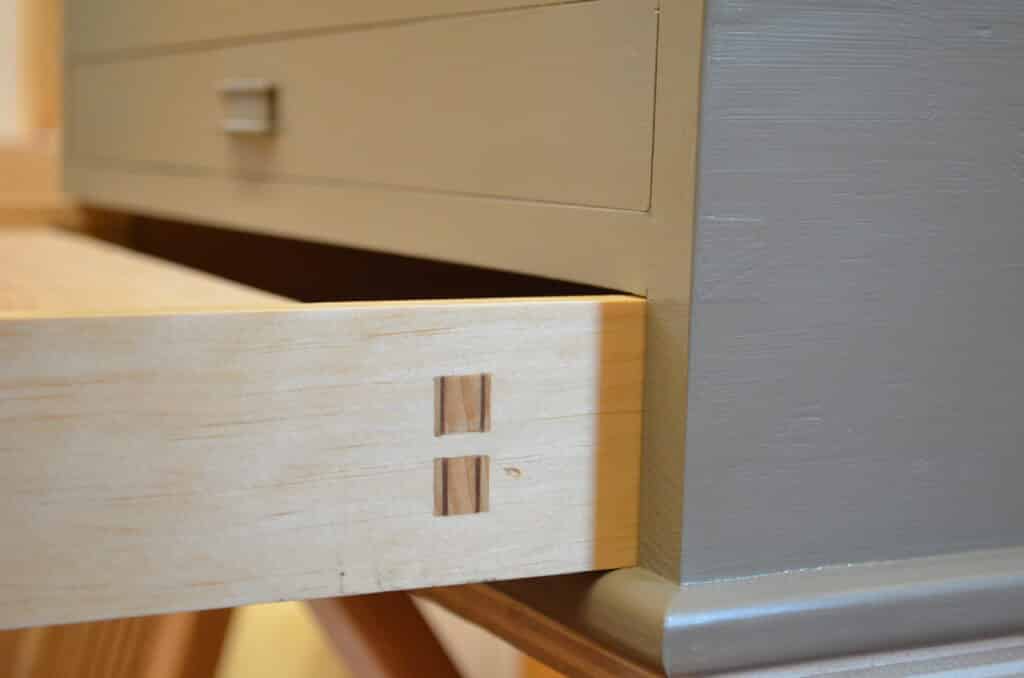
Dovetails and the use of fastenings in the same piece seem most contradictory to many woodworkers but I have never questioned the validity of screws or threaded inserts in my work. The screw thread is one of the most amazing inventions of all. It is as valid as a wood joint but may not in any way really replace it but nor was it really intended to either. Combining a screw with a dado joint is a reasonable solution, I often add a screw here and there to give long-term value and longevity to what might otherwise get racked under pressure causing a separation through time and use. At the back of a drawer or in the side of a bookcase, an added screw increases longevity a dozenfold. And though many try to tell me never to screw into end grain, well, that’s just plain silly. They still have good pulling power and residual strength, of course, they do. You mustn’t let others control your thinking. A screw combined with glue becomes a most excellent localised clamp where otherwise you might never be able to use a clamp. You can then choose to leave the screw in place or not. Control your own mind and thinking and don’t be boxed in. I have dismissed more of what people advised for the betterment of my work and output than I have retained.
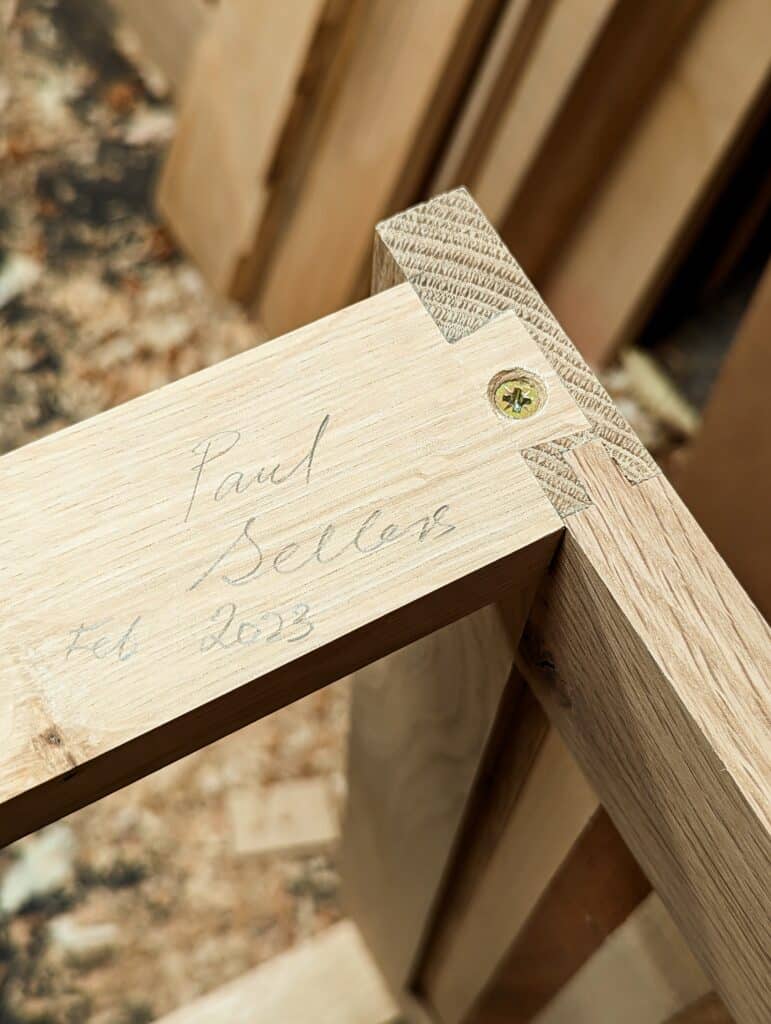
Though I often use dovetails at the back corners of drawers, this is far from my default position as often it is preferable to use housing dadoes instead. I make my decision based on the intended use of the drawer or drawers, size and so on. There is no question that dovetails are likely the best choice if strength is the issue and used for the front corners of drawers there is no substitute, but that’s not altogether necessarily the case for the backs. It’s good to remember that even when grain orientation is in the same direction, one piece can expand differently to the other even when the woods are the same and equally dry on installation. That’s the nature of wood. A single screw somewhere will hold a drawer back secure for the lifetime of the wood itself if and when combined with the housing dado. The screw offers the most direct pulling power to hold the joint together whereas the housing dado keeps the back constrained and prevents warpage and separation of any kind. Why not just use screws then? Well, screws only offer pulling ability but don’t act as warpage checks. Combining the two builds in your integrity into the piece. Though it’s certainly good enough to use the housing dado back there, that is not the primary reason I use it. My choice there is to allow the extra-long extensions to the back of the drawer so that you can pull the drawer all the way to the back, these extensions allow the drawer to cantilever and you don’t pull the drawer out so that the contents spill and the drawer does not fall to your feet.
Dovetails on drawer fronts are chosen for two reasons usually. The dovetail is super strong once glued and the dovetail with its opposing angles opposes the pressures caused by the repetitive pulling action of drawer opening and closing with the added ‘hammering‘ effect from inside the drawer with weighty items like silverware and such. This is significant when a drawer is fully loaded and heavy. Of course, it’s not only for drawers. Boxes of different types will hold together forever. I have been m, making toolboxes and chests for 60 years and the ones I made back in the 1960s will still be around somewhere beyond my travels around the world of woodworking on two continents.
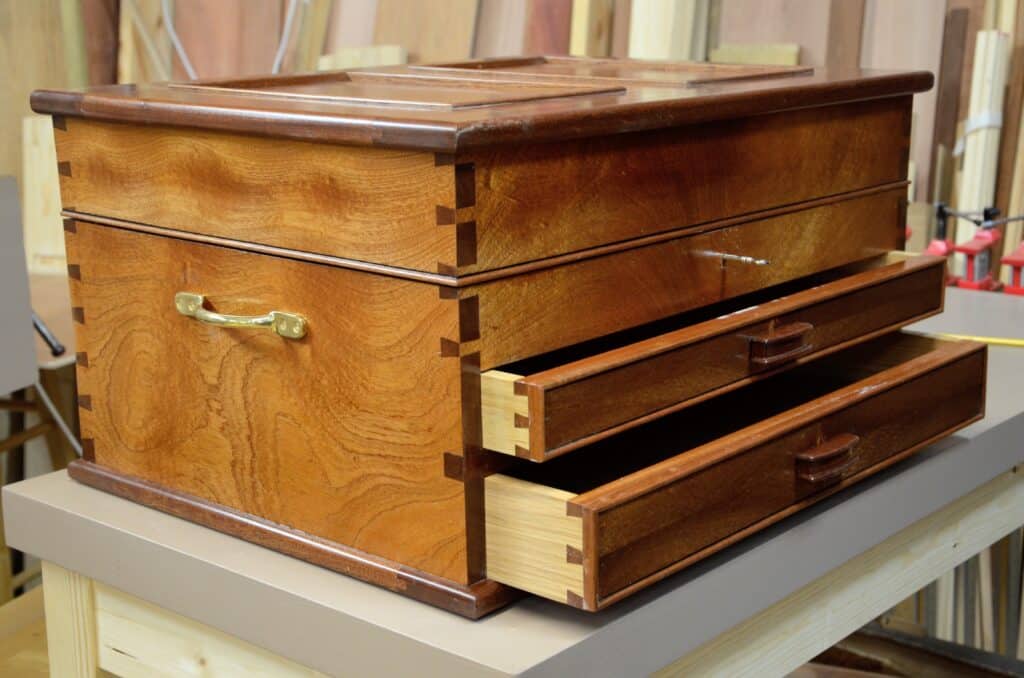

When a drawer has an applied front then the dovetails can be through dovetails and there is no point in using half-lap dovetails. Though it really takes no longer to do and both are equally easy to make. I added an additional feature to my half-laps to make them easier to make. Adding a small rebate to the inside means I can butt the rebate up against the front piece and use a knife all the way around the dovetail and dismiss the use of a marking gauge of any kind. The knife wall delivers second-to-none accuracy for perfect dovetails. This feature alone is invincible and the outcome always results in the best joint ever. It’s a small step to do (pun intended). Perhaps it takes a minute in time to do so really a no-brainer for me.

And then there are the awkward types of joints we sometimes go for. here again, I chose a housing to one side of the joint (at the bottom or underside) with a long and tapered sliding dovetail to the opposite face.
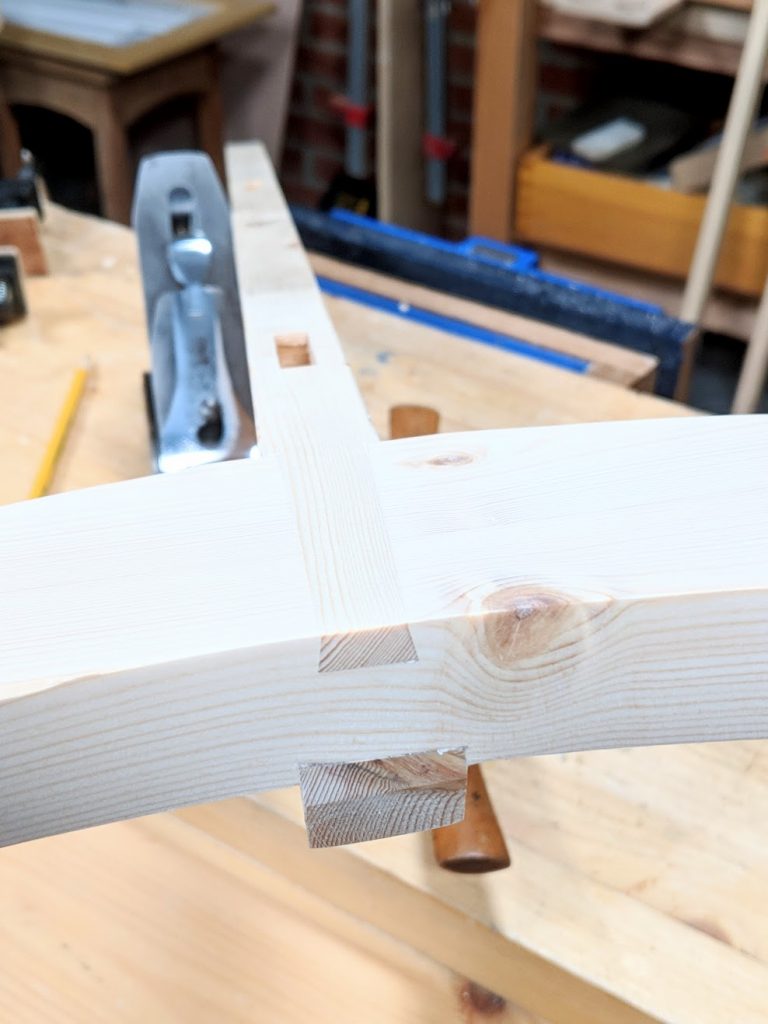
We hand toolists have added benefit that gives tremendous versatility in the zone as we work, which means instancy with none of the fuss, time consumption and complications needed to jig a machine. In my world, a decision for an alternative joint part way through just happens as, if and when I want it to.
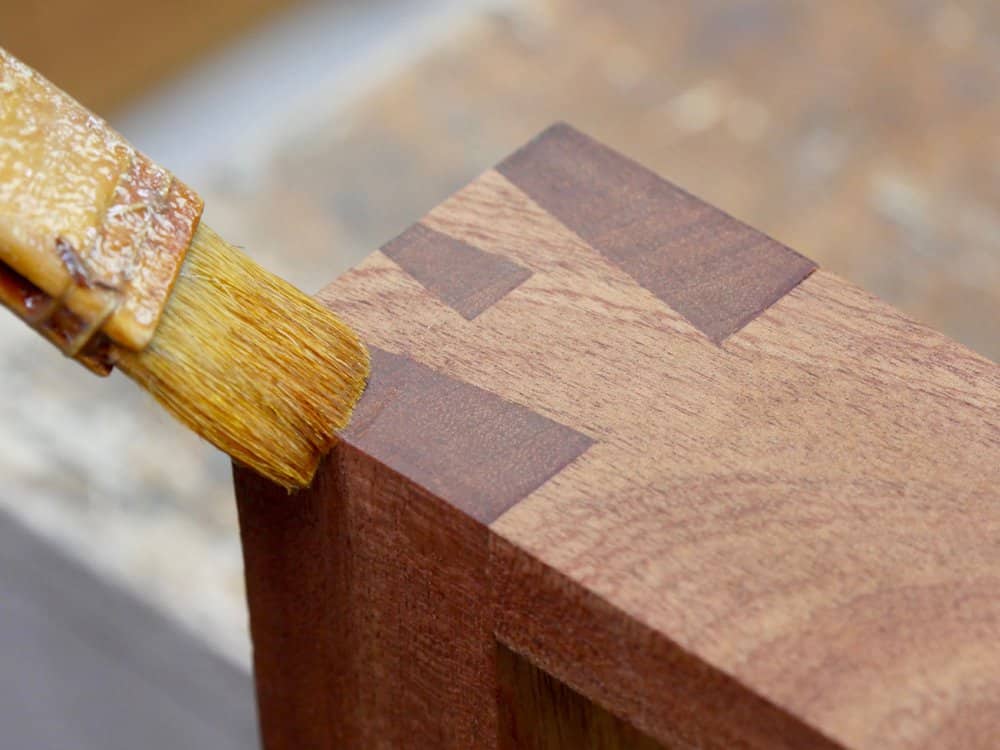


“Why not just use screws then? Well, screws only offer pulling ability”
That is so true.
While one can rely on friction between two metal pieces when screwing them together (e.g. false square), it doesn’t work reliably when screwing two pieces of wood. As the wood shrink or swell, the pressure and so the friction between the pieces will vary. Then the geometry of the assembly can be altered and the holes might enlarge ruining completely the assembly integrity. Furthermore, the screw might be subject to shear forces and break.
I have experienced this.
That is the best argument for using hand tools I’ve ever read.
The issue then becomes one of developing the skills needed to carry out the advantages.
This is where I struggle and get frustrated. For example I’ve never had a dovetail joint come together off the saw. No matter how accurate the saw cuts are my joints have gaps in them.
Disappointed I go back and review what I did wrong, in this case I was compressing the knife wall. The wood was popular so it was an easy mistake to make. So now I’m a little more informed, when the day comes that I can cut this joint right off the saw it will really be an accomplishment. How could I ever learn this by using an electric powered router? I’ve seen other people use them to make the joint and they come out perfectly. The problem is it’s a noisy and dusty process. I live in a quiet country neighborhood and someone who lives several hundred yards down the road from me uses a router for something or other. It’s really quite annoying but they have the right to make noise during the day.
“ Control your own mind and thinking and don’t be boxed in. I have dismissed more of what people advised for the betterment of my work and output than I have retained.”
Mr. Sellers, I wish I had had this kind of advice when I was young. You are an amazing craftsman and a very wise man. Thank you for all you do.
gracias , una excelente reflexion en favor de las herramientas manuales sin el barrullo de las maquinas.
saludos
Oscar
Agree with you Sarah…”a very wise man”!
“I have always, always wanted to go to work for the pure joy of making.”
Then you haven’t really “worked” a day in your life!
I’ve told my kids as such – follow your passion and it will never feel like work. Too much emphasis is placed on “finding a job”, not on “finding your passion”
One of the best blogs I have ever read. Very sound reasoning that makes absolute sence.
I totally agree with every thing you have said.
Very best wishes to you Julian Smith
As usual I thank you Mr. Sellers for your delightful and intuitive writing. In full disclosure I use hand work and machinery to achieve my goals. I enjoy my bench work far more than standing with goggles and hearing protection at a machine. Not to mention the time at the back end of a vacuum and broom to clean up the debris. With my limited skills I have found that one or two dovetail joints are faster by hand but many are “some time saving” with automation. Not as much as the market would tell you if the aftermath, environmental impact and physical requirements are considered. Please continue as I always enjoy learning from younger folks such as you.
Well, as long as anyone turns to a machine to replace and displace the developed skill it takes to become a true master the chances are they will never actually achieve the mastery they hoped for when they began. I never used a machine to cut dovetails and now, of course, I never will simply because of the pure joy dovetailing and joint making brings to me still. It is not the clean up nor the self protection we need when using machines that deters me anymore but the deprivation of the joy I get in the challenges of cutting and trimming my wood square-ended ready for the joints or planing and truing my wood for bodily exercise. As I age these things become ever-more important to me and without my six years of personal training i doubt that I would have the defined health I have now as a result of my work. Not developing full skill cannot be based on the negative element of having to clean up but on the positive benefits of actually working your body in mental and physical dimensions.
You’re an inspiration and example to us all Paul! Woodworkers, diabetics and we aging but young-at-heart folk 🙂
Excellent article. “I have always, always wanted to go to work for the pure joy of making.”
The sentence you work. That is what makes a true craftsman.
I love your joinery Paul. Joinery in woodwork is one of the most satisfying things in life.
J. R. (Ronn) Winn, Vermont – USA
Thanks again, Paul, for your words of experience. I look forward to a video on how to do cockbeading all around a drawer front!
5 minute dovetail? :O Haha. I’m working on it… Switching to the knife and knifewall from a pencil really helped. Thank you for that.
PS – hope your hands are healing nicely.
For me .. While important, it’s not about the end result but rather the Joy in the journey!
I sat looking at this one for some time. Can’t think much past the ripping of the end of the board as I try to imagine doing this joint myself.
“A sliding dovetail is a housing dado (cross-grain housing) and this one has a regular through housing dado on the underside too. I designed this joint for this particular application.”
Is there a video where you show us making one of these? What a wonder.
And thank you.
That Tenon plus Dovetail joint image above reminds me of the unusual, impressive, intimidating looking joints used to join the legs to the bench-top of the old, classic Roubo bench design. Impressive.
Last night I watched the woodland workshop on TV. Usually avoid it as often find it annoying. One of the projects was a gaming chair. A sort of bucket chair shaped a bit like an egg with the front cut out. I saw the design and thought this might be a challenge. saw the pile of wood for the project, thought don’t think steam bending that will work so I guess it will be laminated. But no it was going to be cut into short lengths and end and edge joined. Ends were grooved and a loose tenon glued in to join then. it broke along the grain. Rethink and the groove was reworked to be a dovetail and the ends were then joined with a double dovetail tenon. Still looked very weak to me but held. The now “curved” pieces were joined using biscuits to form the egg. These joints failed and were cleaned up and reglued using PVA rather than the original Polyurethane glue. This time it all held together and the project was finished. But I was left wondering how long the project would remain solid ans it would be under considerable strain as a chair. The working out of the angles to join all of the pieces looked good, all cut by machine. But, IMHO, the execution of the joints was full of the mistakes that a school student who had studied design, but had little woodworking experience would make. The setting looks like it is traditional craft work, the illusion is added to be the use of an old workshop with old tools on the wall in a woodland setting. But the reality of what they do is very different. It convinced me that they might work with wood, but had little real experience.
But it made me think:
We tend to buy wood rectangular in section and straight, although some of it isn’t by the time it is sold. In the past a tree might be bought prior to felling because it contained (potentially) the very curved pieces that might be need. This would be cut and left to season until required. You had to be able to think ahead to work like this. trees still grow with natural curves, but it is rare to see this used.
about 12 years ago I carried a junior hacksaw with a wood blade whilst walking the dog. i figured that some time in the future I might need assistance with walking so selected some proto ash thumb sticks for future completion. They are still in the workshop, indeed I might never need them, but I had thought ahead to the possibility. Now everything seems to work to just in time.